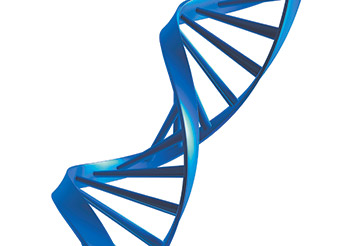Subscriber Benefit
As a subscriber you can listen to articles at work, in the car, or while you work out. Subscribe NowThe brutal murder of Elisabeth Szeleczky at her South Bend home in June 1988 shocked the community and left police stumped.
Investigators of the heinous crime, still described by the former prosecutor as “everybody’s worst nightmare,” had a large pool of suspects and a lot of questions. They were able to turn to the evolving science of DNA analysis to bring charges against the woman’s neighbor and eventually secure a guilty verdict.
The conviction of Kevin Prince in that case became a historic event. It was the first time DNA evidence was used in a St. Joseph County courtroom to convict a defendant.
After the trial, then-St. Joseph County Prosecutor Michael Barnes called DNA “the single most important tool to aid in prosecuting crime in many years.”
Watch a television crime show and likely the detectives or forensic scientists will catch the offender with DNA evidence. This personal identifier is so commonplace that not producing it at a criminal trial can open the door for the defense to raise reasonable doubt.
However, in 1988, the collecting protocols and testing procedures were still being developed.
The sample of semen found at Szeleczky’s home did not produce a match until more than two years after it was first tested. South Bend police and prosecutors sent the sample to a commercial laboratory in New York because, at that time, the FBI was not doing that kind of analysis.
Once the match was made, law enforcement charged Prince with murder in January 1991. Michael Rehak, now a criminal defense attorney in private practice, was his public defender.
Former St. Joseph County Deputy Prosecuting Attorney John Krisor led the prosecution at trial. The late Superior Judge William Means presided.
Szeleczky, a widow, was stabbed 50 times and left in a pool of blood in her bed. She was not sexually assaulted, but semen discovered on her body was linked to Prince. The defendant proclaimed his innocence, pointing to relatives who said he had been with them helping to get ready for his brother’s wedding when the victim was killed.
The tuxedo that Prince wore to the marriage ceremony gave prosecutors another piece of evidence, but the DNA was the star of the trial.
Barnes, now an Indiana Court of Appeals judge, and Rehak remember having to do a lot of homework to educate themselves about the subject. They put experts on the stand that could explain and refute DNA evidence for the jury.
The prosecution team, Barnes said, was especially attentive in its use and presentation of the genetic match because they knew the science would be
used again in other trials. They wanted to establish for the judiciary the validity of DNA analysis, he said.
In addition, the prosecution also searched for jurors who had some understanding of general science. They strived to strike a balance by communicating clearly to the jury the different aspects of DNA and DNA matching while, at the same time, trying to maintain some mystique to help convince jurors to trust the analysis, Barnes said.
Rehak remembered the experts from the commercial lab were “pretty good at their job.” He offered his expert but, he said, she could not raise doubt about the credibility of the prosecution’s claim that Prince’s DNA linked him to the crime.
Another key piece of evidence was Prince’s fingerprints found on the window sill where he was believed to have entered the victim’s house. Prince, who had gained weight between the time of his arrest and the time of the trial, claimed he was too large to have fit through the window.
The prosecution team countered by bringing the window into the courtroom and finding the tuxedo Prince wore at his brother’s wedding, Barnes said. A detective, who matched Prince’s size at the time of the murder, put the outfit on and physically crawled through the window twice. This demonstrated to the jury that Prince was smaller and would have been able to slip through the window.
After the guilty verdict in February 1992, Means sentenced Prince to 40 years in prison. According to the Indiana Department of Correction, he has since been released.
Prince unsuccessfully appealed his conviction to the Indiana Court of Appeals in 1994 as well as the U.S. District Court for the Northern District of Indiana in 1995.
Prince raised several issues, including the admission of DNA evidence at his trial. He tried to convince the Court of Appeals panel that his cousin had been in Szeleczky’s home the day before the murder and the DNA analysis falsely matched his relative’s genetic material to his own. The three judges unanimously rejected that argument, concluding the evidence adequately supported the jury’s finding.
Since the Prince case, Barnes and Rehak have noted the testing procedures have become more sophisticated and the database of samples has grown.
Both said DNA evidence is not foolproof. It can be trumped at trial, although doing so is very difficult.
Barnes has not changed his view of DNA’s importance. Having genetic material at the scene and having such sophisticated tests to find a match gives a certainty that an individual was there, he said.
“DNA is not the be-all and end-all, but it makes a huge, huge difference,” Barnes said.•
Please enable JavaScript to view this content.

